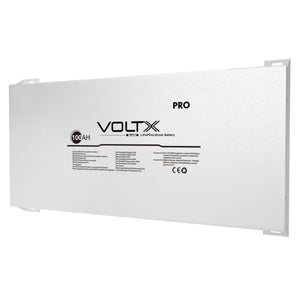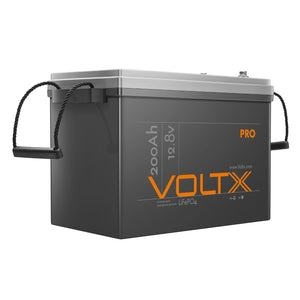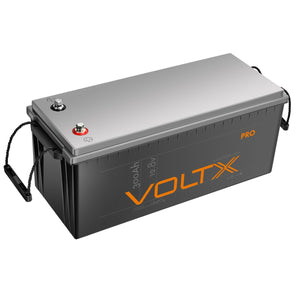In the quest for dependable energy, particularly across the vast and adventurous Australian landscape where off-grid power is often a necessity, the LiFePO4 solar battery emerges as a leading solution. From powering unforgettable camping trips to ensuring essential services in remote locations, reliable energy is paramount. LiFePO4 (Lithium Iron Phosphate) technology is exceptionally well-suited for pairing with solar panels, forming robust lithium solar batteries that are increasingly in demand across the nation due to their superior performance. These advanced batteries offer significant advantages in longevity, safety, and efficiency, making them ideal for demanding solar power and off-grid power applications, which we will explore in detail.
Understanding LiFePO4 Solar Battery Technology
So, what is a LiFePO4 battery? At its core, a LiFePO4 solar battery is defined by its Lithium Iron Phosphate (lithium iron phosphate battery) chemistry. This specific lithium chemistry sets it apart from other lithium-ion types, such as Nickel Manganese Cobalt (NMC) or Lithium Cobalt Oxide (LCO), primarily through its enhanced stability and superior safety profile. This inherent stability makes LiFePO4 battery technology an excellent partner for solar energy storage. Its high thermal stability reduces risks, a significant advantage in warmer climates, and it’s adept at handling the variable charge and discharge cycles typical of LiFePO4 battery solar setups. Furthermore, LiFePO4 batteries boast an impressive cycle life, outperforming many other battery types when consistently used in solar applications, offering users a durable and long-lasting energy solution.
Key Advantages for Your Power Needs
When considering lithium solar batteries, the practical benefits of LiFePO4 technology are compelling, particularly for users requiring robust power solutions. One of the most significant advantages is their exceptional longevity and durability; with a long cycle life often exceeding 2000 cycles, these batteries translate to years of reliable service and excellent value for money, making them ideal as lithium batteries for solar power storage. Their resilience against vibrations and temperature fluctuations makes them perfectly suited for challenging conditions.
In terms of performance, LiFePO4 batteries offer high efficiency in storing and delivering solar rechargeable energy, maintaining consistent power output even when not fully charged. Safety is paramount, and the superior safety profile of LiFePO4 chemistry significantly reduces the risks of thermal runaway, a key factor when seeking the best lithium battery. Furthermore, they are virtually maintenance-free, a considerable advantage for remote applications. Their relatively lightweight nature compared to traditional lead-acid batteries, coupled with options like the slim lithium battery for space-constrained installations in 4WDs or vans, makes them a versatile and efficient lithium deep cycle battery choice for reliable off-grid power.
Choosing the Perfect LiFePO4 Solar Battery
Selecting the ideal LiFePO4 solar battery begins with understanding your specific power needs, primarily your daily energy consumption in Watt-hours (Wh) or Amp-hours (Ah). Battery capacity (Ah) is a crucial factor; common sizes like a 100Ah lithium battery might suit a weekend camper, whereas a lithium battery 200Ah (such as a LiFePO4 battery 12V 200Ah) could be more appropriate for full-time off-grid living or more substantial energy demands. When considering ‘how do I choose the right capacity (Ah) lithium battery for my solar panel system?’, it's vital to match the battery to your solar array's output and your energy usage, often slightly oversizing to account for cloudy days or future expansion.
Voltage requirements also play a key role; a 12V lithium battery is typical for vehicle and camping setups, while a 48V lithium battery might be used for larger home systems, and it's essential to match battery voltage to your solar panel system and inverter. For those with limited space, such as in a 4WD or caravan, a slim lithium battery offers significant advantages by allowing for easier installation in tight spots. Considering these factors—capacity, voltage, and form factor—will empower you to make an informed decision when selecting a lithium battery for solar system applications, whether for a home setup or a portable power solution.
Powering Your Adventures and Home Systems
The versatility of LiFePO4 solar batteries makes them indispensable across a wide array of applications, from rugged outdoor adventures to dependable home energy systems. For enthusiasts of the great outdoors, these batteries provide reliable camping power for lights, fridges, and essential devices, forming the backbone of effective off-grid power solutions. Their durability and efficient power delivery are paramount for caravanning and 4WD touring, ensuring sustained energy for extended trips; indeed, the best LiFePO4 solar batteries for off-grid camping are those that offer a combination of robust capacity, resilience, and efficient solar rechargeability.
At home, LiFePO4 batteries are pivotal for home solar storage, enabling homeowners to maximise the self-consumption of solar energy and reduce their reliance on the grid, with excellent solar panels compatibility making them key batteries for solar panels in residential solar system batteries. They also serve as reliable backup power during outages, offering peace of mind. Beyond leisure, their utility extends to tradespeople working on remote sites or DIY enthusiasts constructing custom lithium batteries for solar power storage systems, showcasing their broad applicability.
LiFePO4 Compared to AGM for Solar Applications
A common question for those investing in solar energy is, "Are LiFePO4 batteries better than AGM for solar storage longevity?" When comparing a LiFePO4 lithium battery against traditional Absorbed Glass Mat (AGM) batteries for solar applications, several key differences highlight LiFePO4's advantages. Firstly, in terms of lifespan and cycle life, LiFePO4 batteries typically offer significantly more charge-discharge cycles, often thousands more than AGM counterparts. Secondly, the usable depth of discharge (DoD) is far greater for LiFePO4; they can be discharged more deeply (e.g., 80-100%) without detrimental effects on their lifespan, providing more accessible energy from the same rated capacity compared to AGM batteries, which are often recommended to be discharged only to 50%.
Thirdly, the weight comparison is stark: LiFePO4 batteries are considerably lighter for the same usable capacity, a significant benefit for mobile applications and easier installation. Efficiency is another area where LiFePO4 excels, with better charge and discharge efficiency meaning less energy is wasted. While the initial outlay for a lithium ion solar battery like LiFePO4 might be higher, the overall cost-effectiveness is often superior due to its extended lifespan, greater usable capacity, and higher performance, points frequently praised in LiFePO4 solar battery reviews.
Making the Most of Your LiFePO4 Solar Battery
While a LiFePO4 solar battery is inherently robust and designed for longevity, adopting proper battery care practices can further maximise its performance and lifespan. Correct charging is paramount; this involves using a compatible charger or, for solar setups, a solar charge controller specifically designed for LiFePO4 chemistry. These devices ensure optimal charging parameters, which is crucial when charging LiFePO4 batteries with solar. The internal Battery Management System (BMS) plays a vital role in protecting the battery from overcharge, over-discharge, extreme temperatures, and over-current, but user practices complement its function.
When pairing your battery with solar panels, ensure the solar panel for LiFePO4 battery charging is appropriately sized and configured to work efficiently with your charge controller and battery specifications. Although LiFePO4 batteries are tolerant of a wide range of operating temperatures, avoiding prolonged exposure to extreme heat or cold can contribute to optimal health. If you plan to store your battery for an extended period, consult the manufacturer's guidelines, which typically involve storing it at a partial state of charge in a cool, dry place. These straightforward measures will help you enjoy reliable power for many years.
Frequently Asked Questions (FAQs)
What exactly is a LiFePO4 solar battery?
It's a type of lithium battery using Lithium Iron Phosphate chemistry, prized for its safety, long life, and suitability for solar energy storage systems.
What are the main benefits of using a LiFePO4 battery for my solar setup?
Key benefits include a much longer lifespan, deeper discharge capability, faster charging, greater safety, and lighter weight compared to older battery technologies.
How do I choose the right capacity (Ah) LiFePO4 battery for my solar panel system?
Calculate your daily energy needs (in Amp-hours or Watt-hours) and consider your solar panel system's output. It's often best to slightly oversize for cloudy days and future needs.
Are LiFePO4 batteries genuinely better than AGM batteries for solar storage longevity?
Yes, LiFePO4 batteries typically offer significantly more charge cycles and a longer overall service life than AGM batteries in solar applications, making them more cost-effective long-term.
How do I properly charge a LiFePO4 battery using solar power?
Use a solar charge controller compatible with LiFePO4 batteries. This device regulates the voltage and current from your solar panels to charge the battery safely and efficiently, following the manufacturer's recommended settings.
Frequently Asked Questions
- What exactly is a LiFePO4 solar battery?
- What are the main benefits of using a LiFePO4 battery for my solar setup?
- How do I choose the right capacity (Ah) LiFePO4 battery for my solar panel system?
- Are LiFePO4 batteries genuinely better than AGM batteries for solar storage longevity?
- How do I properly charge a LiFePO4 battery using solar power?








